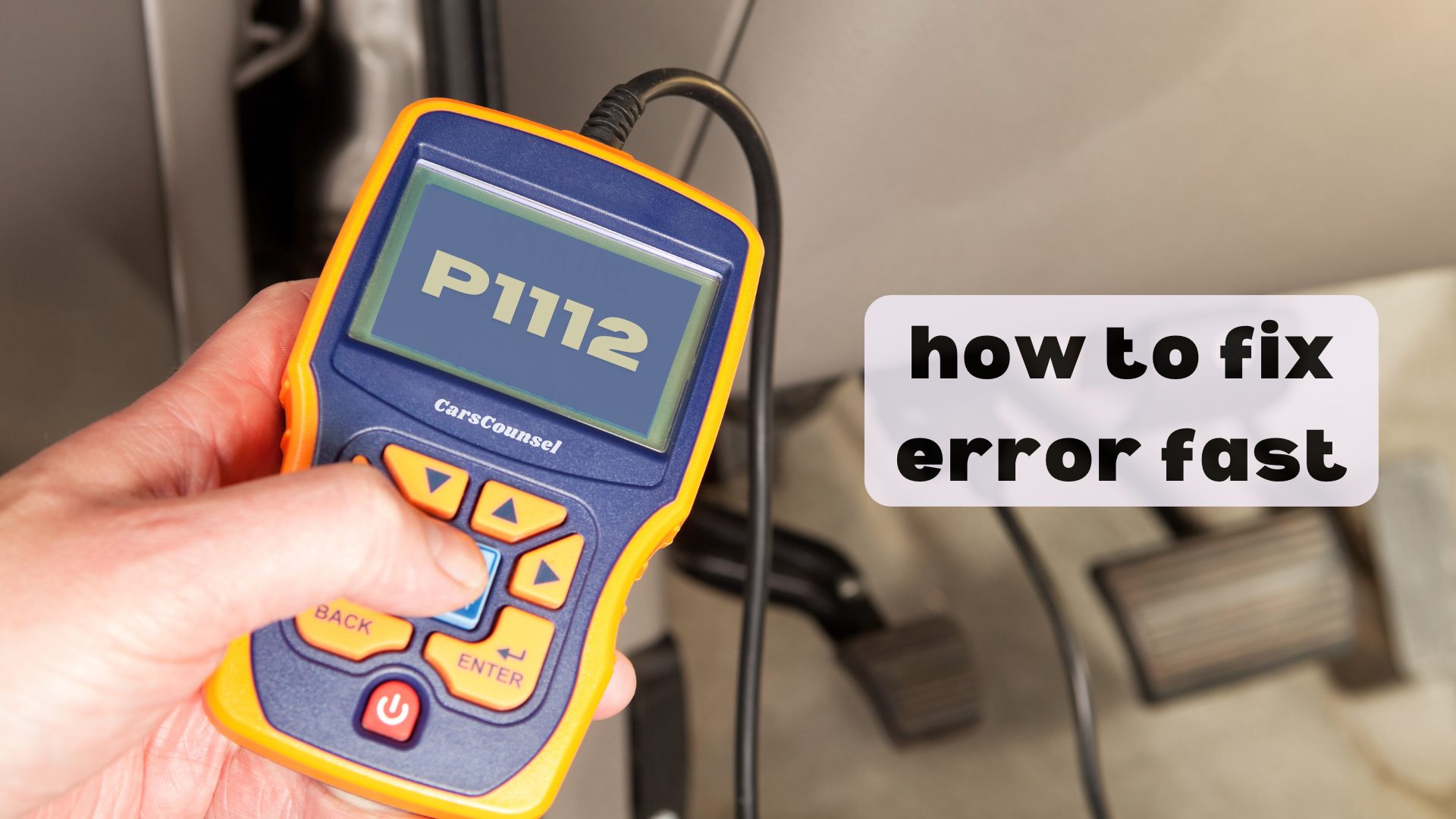You’ve noticed your engine’s been acting up lately, and the check engine light‘s been flashing that dreaded P1112 code. You’re likely wondering what’s going on and how to fix it. The fault code indicates an intermittent fault with your Intake Air Temperature (IAT) sensor, which is vital for your engine’s performance.
A faulty IAT sensor can lead to decreased fuel efficiency, rough idling, and even stalling – and if left unrepaired, it can cause more severe engine problems down the line. But what’s causing this intermittent fault, and how can you diagnose and fix it?

Quick Navigation
Key Takeaways
- The P1112 code indicates an intermittent fault with the Intake Air Temperature (IAT) sensor, affecting engine performance and fuel efficiency.
- Common causes of the code include IAT sensor malfunctions, wiring issues, corrosion, and extreme temperature changes.
- Symptoms of a faulty IAT sensor include decreased fuel efficiency, rough idling, engine sputters, and illumination of the Check Engine Light.
- To diagnose the issue, inspect the sensor and wiring, check calibration, and test resistance readings using a multimeter.
- Replacing the faulty IAT sensor can cost between $100 to $300, depending on labor rates and location, and timely repair is crucial to prevent engine damage.
Code P1112 Description and Function
Your vehicle’s engine relies on precise temperature readings to maximize performance, and the Intake Air Temperature (IAT) sensor plays a crucial role in providing this critical information.
The IAT sensor measures the temperature of the air entering the engine, allowing the engine control module (ECM) to adjust the air-fuel mixture for ideal combustion. Temperature importance can’t be overstated, as incorrect readings can lead to performance issues and decreased fuel efficiency.
The sensor function is to provide accurate and reliable data to the ECM, enabling it to make precise adjustments. Inconsistent or unreliable readings can cause the ECM to make incorrect adjustments, affecting engine performance and efficiency.
Common Causes of Intermittent Fault
When the IAT sensor malfunctions, it can lead to a range of issues, and understanding the common causes of intermittent fault is key to addressing the problem.
You’ll want to investigate potential sensor malfunctions, wiring issues, or corrosion on sensor contacts that may be causing the inconsistent readings.
Damaged wiring or connectors can also lead to faulty signals being sent to the ECM.
Additionally, extreme temperature changes can affect the sensor’s accuracy, resulting in intermittent faults.
Symptoms of a Faulty IAT Sensor
A faulty IAT sensor can manifest in various ways, and recognizing these symptoms is crucial for prompt diagnosis and repair.
You may experience decreased fuel efficiency, which can be frustrating and costly. Additionally, you might notice rough idling or stalling, especially during cold starts.
Engine sputters or hesitations when accelerating are also common symptoms of an IAT sensor malfunction. Moreover, you may see the Check Engine Light illuminated on your dashboard, indicating that the engine control module (ECM) has detected an issue.
If you’re experiencing any of these symptoms, it’s essential to address the problem quickly to prevent further damage to your engine.
Diagnosing and Testing the IAT Sensor
To accurately diagnose the IAT sensor, you’ll need to perform a series of tests to identify the root cause of the problem.
Begin by inspecting the sensor and its wiring for visible damage, corrosion, or buildup. Next, perform a wiring inspection to verify there are no issues with the sensor’s electrical connections.
Check the sensor’s calibration to guarantee it’s providing accurate readings. You can do this by consulting your vehicle’s repair manual or using a scan tool to access the sensor’s calibration data.
Use a multimeter to test the sensor’s resistance readings and compare them to the manufacturer’s specifications. If the readings are inconsistent, it may indicate a faulty sensor.
Replacing the Faulty IAT Sensor
How do you guarantee a seamless replacement of the faulty IAT sensor?
Start by verifying you’ve properly diagnosed the issue and identified the sensor as the root cause.
Next, consult your vehicle’s repair manual for specific instructions on replacing the IAT sensor.
During the replacement process, perform wiring checks to identify any damage or corrosion that may need to be addressed.
Remove the faulty sensor, taking note of its orientation and connection points.
Install the new sensor, following the manufacturer’s guidelines, and reconnect the wiring.
Make sure all connections are secure and not damaged.
Cost of Repair and Replacement
Your wallet’s biggest concern when dealing with a P1112 code is the cost of repair and replacement.
You’ll want to get a clear estimate of the expenses involved to plan your budget accordingly.
Some costs to ponder:
- New IAT sensor cost: $50 to $150
- Labor costs: $50 to $150
- Total repair cost: $100 to $300
Keep in mind that these are general estimates, and the actual cost may vary depending on your vehicle’s make and model, location, and the shop you choose.
It’s a good idea to shop around and compare repair estimates from different shops to find the best deal.
Be sure to ask about diagnosis time and labor rates to get a more accurate estimate.
Importance of Timely Repair
Ignoring the P1112 code can lead to more severe engine problems down the road, so it’s essential to address the issue promptly. Delaying repairs can result in decreased engine performance, reduced fuel efficiency, and even engine damage. Timely maintenance is pivotal to prevent these consequences.
| Consequence of Delay | Impact on Engine |
|---|---|
| Decreased Fuel Efficiency | Reduced Engine Performance |
| Engine Stalling or Misfires | Increased Engine Wear |
| Increased Emissions | Failed Emissions Test |
| Engine Damage | Costly Repairs or Replacement |
Preventing Future IAT Sensor Issues
To minimize the likelihood of future IAT sensor issues, it’s crucial to maintain a clean and well-functioning intake air system.
You can achieve this by following a few simple steps:
- Regularly clean or replace your air filter to prevent debris and dirt from accumulating on the IAT sensor.
- Perform sensor maintenance by inspecting the sensor and its wiring for signs of damage, corrosion, or buildup.
- Schedule regular inspections to identify any potential issues before they become major problems.
More OBD-II Codes
Conclusion
As you’ve explored into the world of code P1112, you’re now aware of the critical role the IAT sensor plays in your engine’s performance. But beware – ignoring this intermittent fault can lead to catastrophic engine failure. Will you take the necessary steps to diagnose and replace the faulty sensor, or will you risk being stranded on the side of the road, wondering what could’ve been? The fate of your engine is in your hands.

